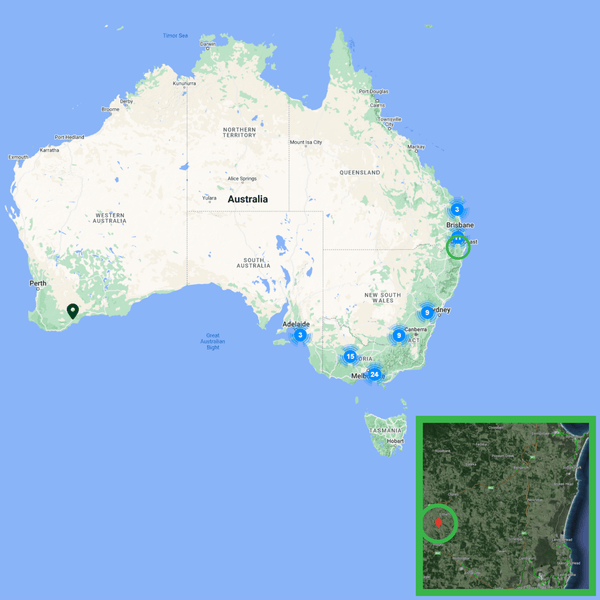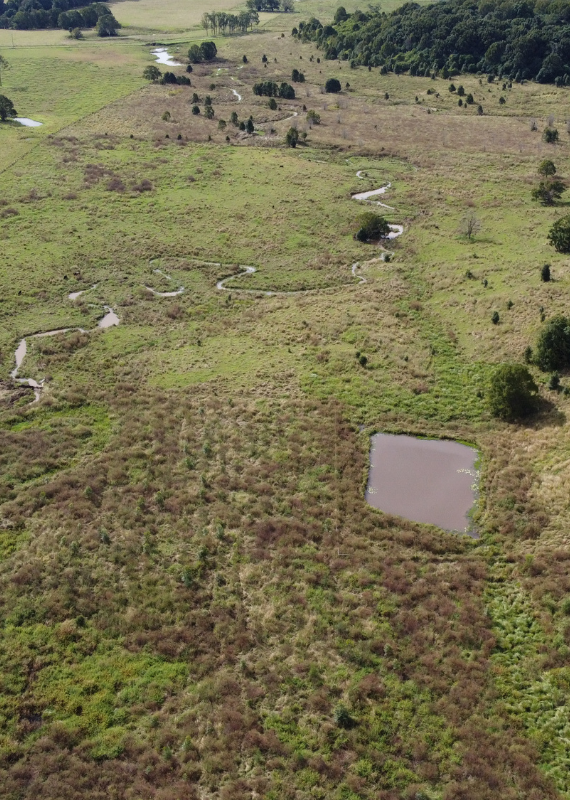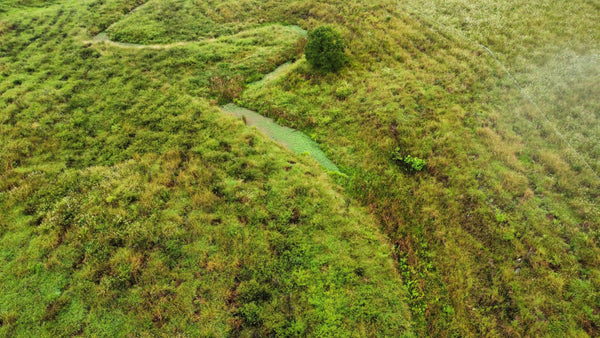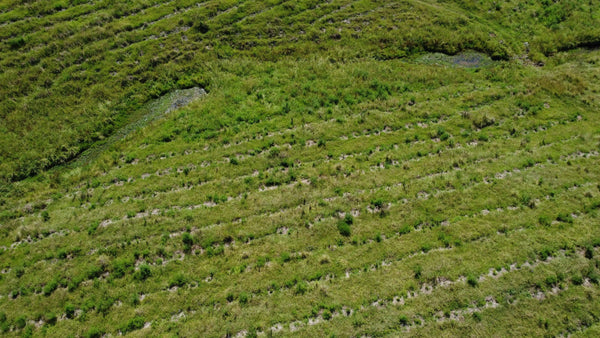On Bundjalung Country in the Northern Rivers of New South Wales, Spurfield Road is being revegetated to restore this once-subtropical rainforest. The region has been impacted by land clearing for timber production and agricultural purposes, which has affected the water flow on the property.
While delivering critical climate action, this forest will also provide habitat for the local fauna, assist in improving water quality, and contribute to rainforest restoration in this region.

Location & Map
Located a short drive northeast of Lismore, this 8-hectare site is being restored to create a self-sustaining forest that replicates the lowland subtropical rainforest that existed prior to land clearing. The site is home to three ephemeral lakes and a creek runs directly through the property.
Greenfleet’s work at Spurfield Road is one of several restoration initiatives underway to bolster this important ecosystem. This includes Greentrees, which is growing critical habitat for the local koala population. Find where more of our revegetation projects are growing here.

Revegetation Approach & Species Selection
Referred to as ‘Big Scrub’ there is now only 2% remaining of this area’s once-lush 75,000 hectares of lowland rainforest. The land has been cleared extensively since European settlement.
Located within the Big Scrub region, this project at Spurfield Road will support rainforest restoration in the area. Lowland subtropical rainforest supports up to 200 species of plants that can provide habitat and food for a wide variety of native fauna.
The incidence of high rainfall in 2022, coupled with the lakes and creeks at the property has proven Spurfield Road is prone to excess water events. As a result, some of the species like Sandpaper Fig (Ficus coronata) and Swamp She-oak (Casuarina glauca) were selected for their ability to grow in wetter conditions. Greenfleet has planted over 14,500 trees in total at Spurfield Road, with approximately 40 native species of sun and frost tolerant flora selected as a part of this restoration project. More than half of them were rainforest species.
Fast growing eucalypt species such as Flooded Gum (Eucalyptus grandis) and Swamp Mahogany (Eucalyptus robusta) were planted to create the canopy of the forest. Having an established canopy assists the growth of other plants by providing protection from the sun and shading out unwanted grasses.
Reflecting on the selected species, Greenfleet’s Project Manager for Spurfield Road, Thomas Bell said, “converting a grazing paddock into a mature rainforest follows a standard progression from pioneer species to secondary species to mature species over decades.” He noted that, “Greenfleet has selected mostly pioneer species to grow fast and provide early canopy closure and fruiting.”

Flood Impacts In The Northern Rivers
In 2022, widespread flooding in the Northern Rivers impacted homes, people, wildlife, and businesses. These weather events had an ongoing effect on the operations of this project demonstrating the role that climatic events can play in our work.
Greenfleet’s Revegetation Team engages local suppliers and contractors in the regions in which we work. The rainforest species for this project came from Hurley Landscaping and Nursery in the Lismore Shire. Ben Hurley’s business was directly impacted by the floods, however by setting up at a temporary location, they managed to provide these plants to Greenfleet later in the year.

Wildlife Habitat Restoration
As its not connected to other areas of vegetation, the forest growing at Spurfield Road will become a habitat island to be utilised as a stepping stone by wildlife species.
While this project is delivering climate action and restoring lowland subtropical rainforest species, some species were selected specifically to aid the region’s wildlife. Forest Red Gum (Eucalyptus tereticornis) were used in the planting to supplement koala habitat and food sources for known populations in the region. Fast growing eucalypts will also be utilised by local birdlife.
The planting at Spurfield Road will be important for native bat species, which suffer due to habitat loss and increases in environmental temperatures. Once established, trees planted such as Blue Quandong (Elaeocarpus grandis) will provide food for bats as they move across this region. The trees also provide roosting locations for them to use as shelter and protection.
Project Manager, Thomas Bell also noted the important role birds and bats will play in helping the forest become established. “The visiting birds and bats will deposit seeds from adjacent areas to replace some of the short-lived pioneer species with a variety of other rainforest plants increasing the biodiversity of the forest and over time changing the forest flora into the mature species.”
Rainforest vegetation is generally also home to native wildlife such as quolls and ground dwelling reptiles.
Climate Action
Greenfleet delivers climate action by restoring legally protected native ecosystems. As the forests we plant grow, they remove carbon emissions from the atmosphere to actively fight the impacts of climate change.
Across its lifetime, the forest at Spurfield Road will deliver substantial climate action by removing nearly 16,600 tonnes of carbon. This is the equivalent of what 3,858 average cars emit in a single year.
Importantly, the forest is legally protected for 100 years to ensure it can deliver these long-term climate action and environmental outcomes.
Location Size
8 hectares in Northern New South Wales
Planting Dates
2022
Species
- Acacia aulacocarpa
- Acacia melanoxylon
- Acmena smithii
- Alphitonia excelsa
- Araucaria cunninghamii
- Brachychiton acerifolius
- Callicoma serratifolia
- Melaleuca salignus
- Melaleuca viminalis
- Castanospermum australe
- Casuarina cunninghamiana
- Casuarina glauca
- Commersonia bartramia
- Cryptocarya obovata
- Ehretia acuminata
- Elaeocarpus grandis
- Eucalyptus grandis
- Eucalyptus microcorys
- Eucalyptus robusta
- Eucalyptus tereticornis
- Ficus coronata
- Ficus macrophylla
- Ficus obliqua
- Flindersia schottiana
- Glochidion sumatranum
- Gmelina leicharddtii
- Grevillia robusta
- Lophostemon confertus
- Lophostemon suaveolens
- Mallotus phillipensis
- Melaleuca quinquinervia
- Pararchidendron pruinosum
- Syzygium australe
- Syzygium francisii
- Syzygium oleosum
- Syzygium smithii
- Tristaniopsis laurina
- Waterhousia floribunda




